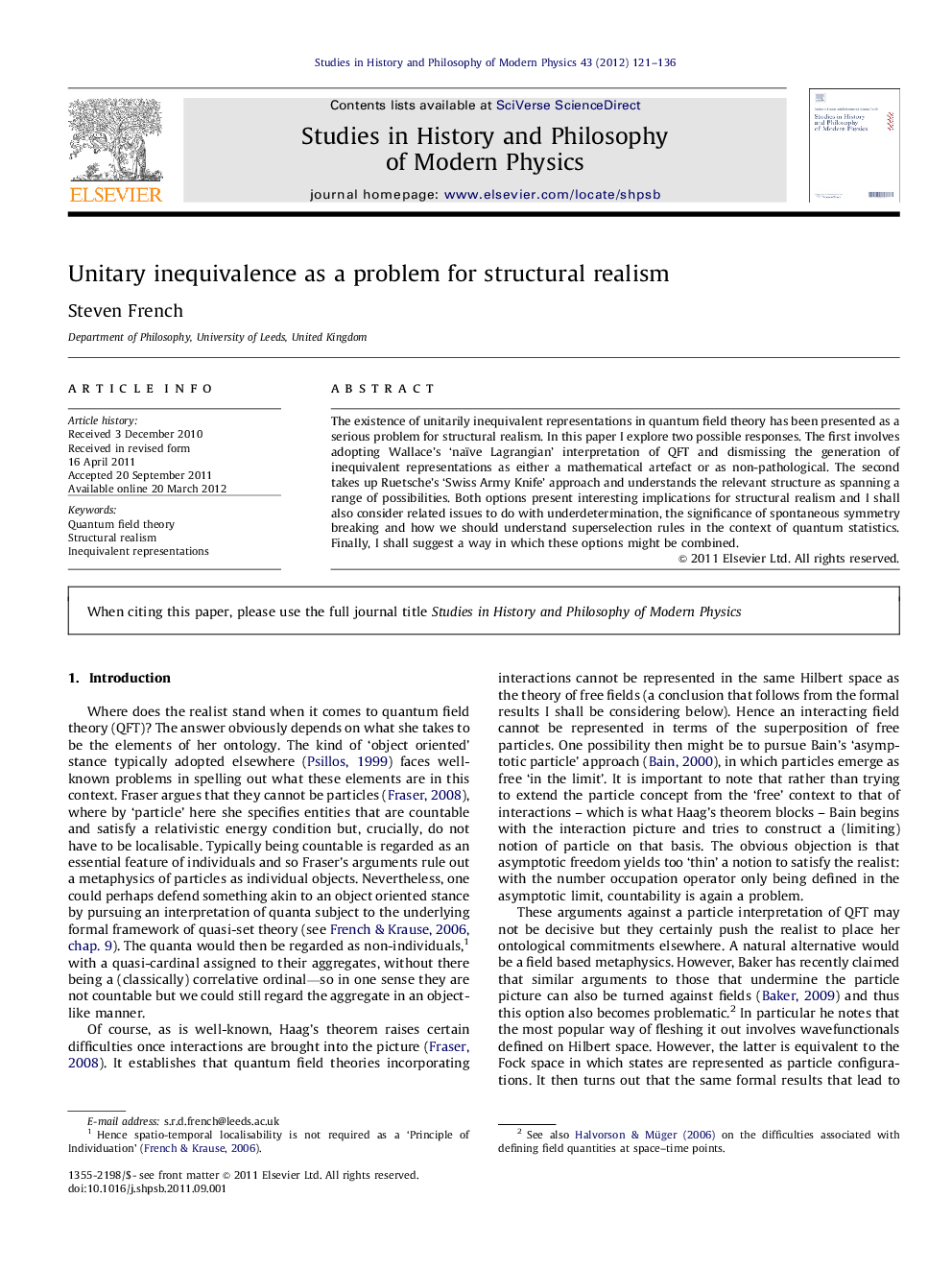| کد مقاله | کد نشریه | سال انتشار | مقاله انگلیسی | نسخه تمام متن |
|---|---|---|---|---|
| 1161041 | 1490441 | 2012 | 16 صفحه PDF | دانلود رایگان |

The existence of unitarily inequivalent representations in quantum field theory has been presented as a serious problem for structural realism. In this paper I explore two possible responses. The first involves adopting Wallace's ‘naïve Lagrangian’ interpretation of QFT and dismissing the generation of inequivalent representations as either a mathematical artefact or as non-pathological. The second takes up Ruetsche's ‘Swiss Army Knife’ approach and understands the relevant structure as spanning a range of possibilities. Both options present interesting implications for structural realism and I shall also consider related issues to do with underdetermination, the significance of spontaneous symmetry breaking and how we should understand superselection rules in the context of quantum statistics. Finally, I shall suggest a way in which these options might be combined.
► Inequivalent representations in QFT present a problem for the structural realist.
► One option is to adopt Wallace's Lagrangian approach and tackle the admissibility of cut-offs.
► Another is Ruetsche's ‘Swiss Army Knife’ view with an understanding of the modal nature of structure.
► Spontaneous symmetry breaking and the role of superselection rules are also discussed.
► Both options allow a structuralist to meet the challenge posed by inequivalent representations.
Journal: Studies in History and Philosophy of Science Part B: Studies in History and Philosophy of Modern Physics - Volume 43, Issue 2, May 2012, Pages 121–136